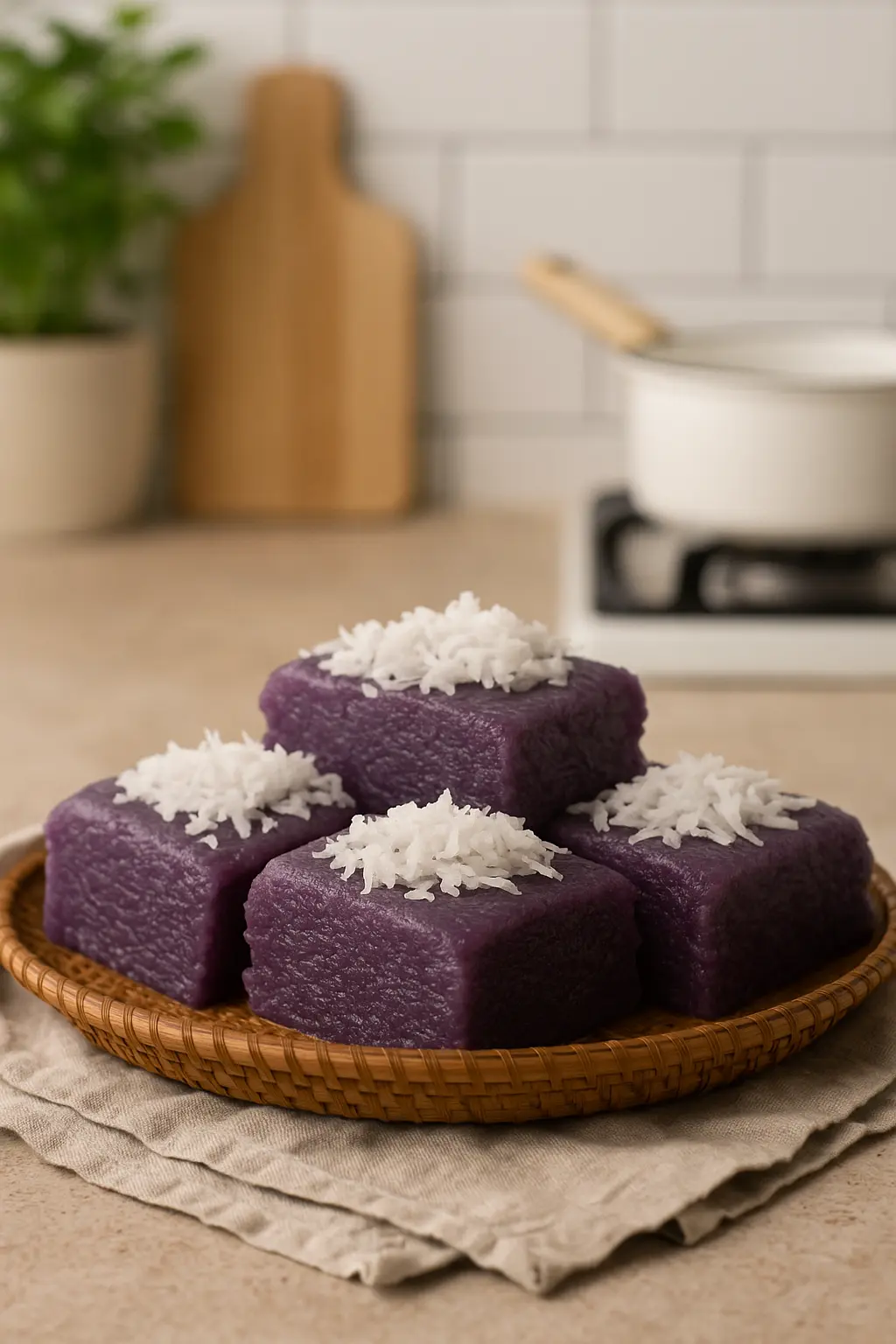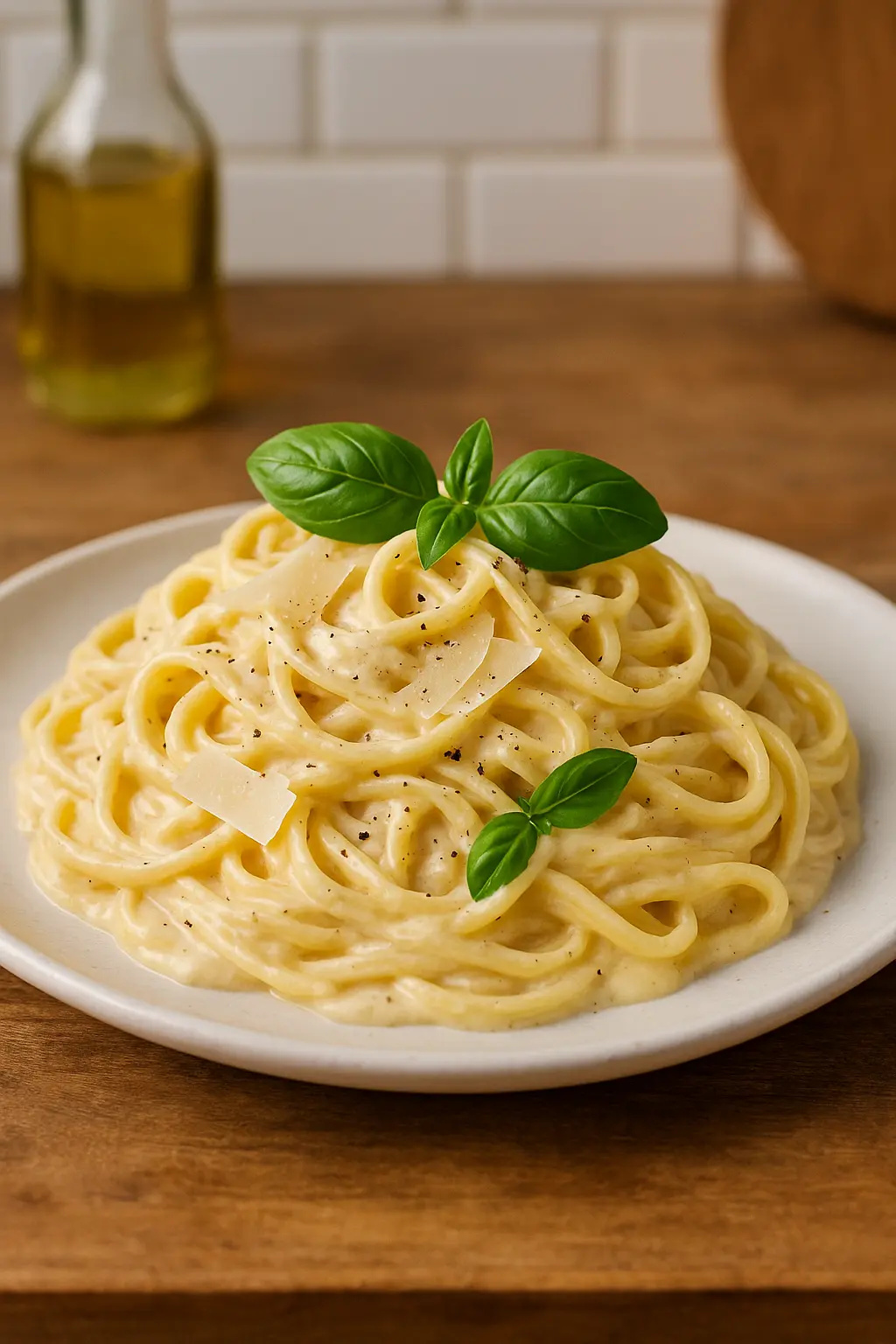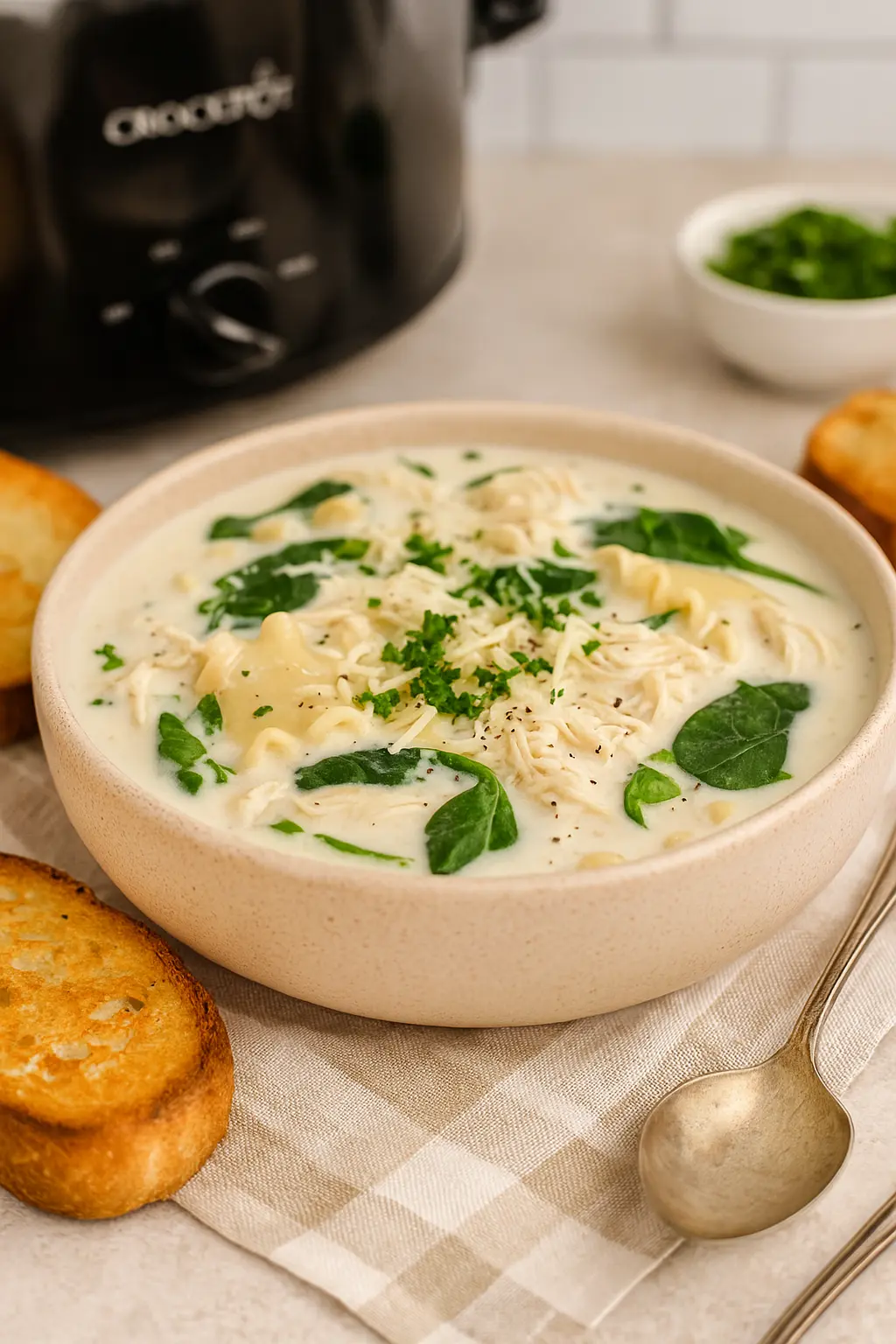Discover the Comfort of Filipino Kakanin: A Sweet Rice Cake Recipe for All Seasons
There’s a kind of magic in making filipino kakanin—an aroma that brings back memories, a texture that comforts, and flavors that evoke stories passed down through generations. For me, making kakanin is more than tradition; it’s a way to honor my heritage while making something warm and joyful for my own family.
Today’s recipe is my own spin on filipino kakanin, designed with a fusion twist for the modern kitchen. This chewy coconut rice cake blends authentic Filipino ingredients with American convenience. Whether you’re serving it on a sunny picnic table or beside a cozy winter fire, this dish never fails to bring smiles.
What is Filipino Kakanin?
The term filipino kakanin refers to a range of native Filipino delicacies, mostly rice-based and steamed or baked. Typically made with glutinous rice or rice flour, coconut milk, and sugar, kakanin desserts are known for their soft, sticky, and satisfying texture. They’re commonly served during holidays, fiestas, and special occasions.
From sapin-sapin and suman to puto and bibingka, each filipino kakanin has its own charm. This particular recipe is a baked coconut rice cake—a hybrid between bibingka and cassava cake, made with ingredients easy to find in U.S. grocery stores.
Why Make This Filipino Kakanin Recipe?
- 🥥 Authentic Ingredients, Easy Method – You’ll love how this filipino kakanin captures traditional flavors with a simplified approach.
- 🥶☀️ All-Season Friendly – Serve cold for summer or warmed up in winter. It’s delicious either way.
- 🇵🇭🇺🇸 Filipino-American Fusion – A nod to both cultures, blending tropical ingredients with local American pantry staples.
- 🧁 Great for Sharing – This recipe makes enough for a family gathering or potluck party.
- 🍃 Customizable Toppings – Top it off with salted egg, cheese, or fresh fruit—whatever suits your taste or the season.
Ingredients (Serves 6)
To create your own filipino kakanin masterpiece, gather these:
- 2 cups glutinous rice flour
- 1 cup canned coconut milk
- ¾ cup whole milk (or substitute almond milk)
- ¾ cup granulated sugar
- 1 tsp vanilla extract
- ¼ tsp salt
- 2 large eggs
- 2 tbsp melted butter (or coconut oil)
Optional Toppings
- Salted egg slices (classic filipino kakanin touch)
- Grated cheddar cheese
- Mango or pineapple (for a tropical summer version)
- Cinnamon-sugar crumble (for cozy winter flavors)

How to Make Filipino Kakanin
Preparation Time: 15 mins
Cooking Time: 45 mins
Total Time: 1 hour
Step 1: Preheat and Prep
Start by preheating your oven to 350°F (175°C). Grease a 9-inch round or square pan with butter or coconut oil.
If you can find banana leaves, line the pan for a traditional filipino kakanin presentation—it adds both aroma and nostalgia.
Step 2: Mix the Wet Ingredients
In a large bowl, whisk together the eggs, coconut milk, whole milk, vanilla, and sugar. Stir until the sugar is well dissolved.
Step 3: Add Dry Ingredients
Gradually mix in glutinous rice flour and salt. Blend until the batter is smooth. The consistency should be slightly thick but still pourable.
Step 4: Assemble and Add Toppings
Pour the batter into your prepared pan. Add your favorite filipino kakanin toppings like salted egg or shredded cheese.
For summer, top with mango slices. For winter, a sprinkle of cinnamon and brown sugar gives it warmth.
Step 5: Bake
Bake for 40–45 minutes or until the top is golden and a toothpick comes out clean. The center should be firm but moist.
Step 6: Cool and Serve
Let your filipino kakanin cool before slicing. Serve it warm, room temperature, or chilled—each has its charm!

Storage & Reheating
- Refrigerate for up to 5 days.
- Freeze individual slices for up to 2 months.
- Reheat in the microwave or oven to revive its chewy texture.
How to Serve Filipino Kakanin
In Summer:
- Chill your filipino kakanin, then top with fresh mango and drizzle with coconut cream.
- Pair with iced calamansi juice.
In Winter:
- Warm slices and top with a pat of butter and cinnamon.
- Serve alongside a cup of Filipino-style hot chocolate.
Nutrition Facts (per serving)
- Calories: 280
- Carbs: 38g
- Protein: 4g
- Fat: 13g
- Sugar: 14g
A Family Tradition Reimagined
The first time I made this version of filipino kakanin, my kids were skeptical—it wasn’t exactly how my lola made it. But after a few bites, they were hooked. Now, it’s become a staple in our home. Whether we’re celebrating something big or just having a quiet Sunday, a tray of this sticky, sweet delight brings everyone to the table.
Tips for Perfect Filipino Kakanin
- Use full-fat coconut milk for richness.
- Let it cool slightly for easier slicing.
- Customize it—every family has their own filipino kakanin signature!
Related Recipes You’ll Love
- Sapin-Sapin: Rainbow Rice Cake Delight
- Easy Puto in 20 Minutes
- Cassava Cake with Coconut Custard
- Ube Kakanin Bars with Coconut Cream
The Cultural Significance of Filipino Kakanin
Kakanin has long been a symbol of togetherness in Filipino culture. These sweet rice cakes are commonly offered during festivals (fiestas), religious events, and family gatherings. Every town in the Philippines has its unique version of filipino kakanin, from the suman sa lihiya in Luzon to budbud kabog in the Visayas.
Making kakanin is often a communal activity. In rural areas, neighbors come together to prepare large batches for special events. It’s a dish steeped in tradition—each sticky bite tying generations together.
Popular Toppings and Variations
Toppings can transform your basic filipino kakanin into a colorful, multi-textured masterpiece. Here are some popular and creative ideas:
Traditional Toppings
- Latik (Coconut Curd): Cook coconut milk until it separates into oil and solids. Use the toasted curds for an earthy crunch.
- Grated Cheese: Often used in bibingka, it adds a savory note.
- Salted Duck Egg: Adds umami contrast to the sweetness.
- Toasted Coconut Flakes: Crunchy and fragrant.
Modern Fusion Ideas
- Berries and Whipped Cream: Adds freshness and a nod to American shortcake.
- Maple Glaze: A cozy, fall-inspired twist on your filipino kakanin.
- Chocolate Chips or Chunks: Make it appealing to younger audiences.
- Ube Halaya Swirl: Infuse vibrant color and flavor with purple yam jam.
Read more : https://chefnip.com/great-pastry-spanish-to-fall-in-love-with/
Beverage Pairings for Every Season
Filipino kakanin is versatile enough to match with a wide range of drinks, depending on the time of year.
Summer Pairings
- Iced Barako Coffee – Strong, nutty Filipino coffee on ice complements the richness of kakanin.
- Buko Juice – Light and hydrating coconut water enhances the coconut base of the dessert.
- Calamansi Soda – The citrusy kick cuts through the sweetness.
Winter Pairings
- Tsokolate Eh – Rich Filipino hot chocolate made from tablea.
- Ginger Tea (Salabat) – A soothing option with a warm spice.
- Spiced Apple Cider – Adds a Western twist to a cozy moment.

Filipino Kakanin Through the Seasons
You can easily adapt filipino kakanin to seasonal events and ingredients:
Spring
- Use edible flowers like violets or pansies as garnish.
- Add citrus zest for brightness.
Summer
- Top with tropical fruits: mango, pineapple, lychee.
- Serve chilled with coconut ice cream.
Autumn
- Mix in pumpkin puree and cinnamon.
- Pair with chai or spiced lattes.
Winter
- Add crushed nuts and drizzle with caramel.
- Serve warm with holiday teas or hot cocoa.
How to Make Filipino Kakanin for Parties
If you’re preparing this dish for a party, double or triple the recipe. Use mini muffin tins to make bite-sized servings—great for buffets or dessert platters. You can also prepare it a day ahead; it actually tastes better the next day as the flavors settle and the texture becomes even chewier.
Wrap mini squares in banana leaves or parchment paper and tie with twine for a rustic, gift-worthy presentation. Your filipino kakanin will be the star of the dessert table!
FAQs
1. What is kakanin?
Kakanin is a collective term for Filipino native delicacies made primarily from glutinous rice (malagkit), coconut milk (gata), and sugar. The word “kakanin” is derived from the Tagalog words “kain” (to eat) and “kanin” (rice). These treats are often enjoyed as snacks or desserts and hold cultural significance in various Filipino traditions and celebrations.
2. What are the most popular types of kakanin?
Some of the most beloved kakanin varieties include:
- Puto: Steamed rice cakes that are soft and slightly sweet, often topped with cheese or salted egg.
- Suman: Sticky rice cooked in coconut milk, wrapped in banana or palm leaves, and steamed.
- Bibingka: A baked rice cake traditionally cooked in clay pots lined with banana leaves, commonly served during the Christmas season.
- Sapin-sapin: A colorful, layered rice cake made with glutinous rice flour, coconut milk, and various flavorings like ube and jackfruit.
- Biko: Sweet sticky rice topped with latik (coconut curds), often served during special occasions.
- Kutsinta: Brown, jelly-like rice cakes made with lye water and often served with grated coconut.
3. What are the main ingredients used in making kakanin?
The primary ingredients in kakanin are:
- Glutinous rice or rice flour: Provides the sticky texture characteristic of many kakanin.
- Coconut milk (gata): Adds richness and flavor.
- Sugar: Sweetens the delicacies.
Additional ingredients may include root crops like cassava, flavorings such as ube (purple yam) or pandan, and toppings like grated coconut, latik, or cheese.
4. Is kakanin considered a dessert or a snack?
Kakanin serves both as a dessert and a snack in Filipino cuisine. It’s commonly enjoyed during merienda (afternoon snack) or as a sweet ending to meals. Additionally, kakanin plays a significant role in festive occasions, religious events, and family gatherings.
5. How is kakanin traditionally prepared?
Traditional preparation methods for kakanin vary depending on the type:
- Steaming: Used for puto, suman, and kutsinta.
- Baking: Employed for bibingka, often using clay pots lined with banana leaves.
- Boiling: Applied to certain types like palitaw, which are boiled until they float.
These methods often involve the use of natural materials like banana leaves for wrapping or lining, imparting unique flavors and aromas to the kakanin.
6. Are there regional variations of kakanin in the Philippines?
Yes, the Philippines boasts a diverse range of kakanin that vary by region:
- Puto Bumbong: A purple rice cake steamed in bamboo tubes, traditionally served during the Christmas season in Luzon.
- Kalamay: A sticky sweet delicacy made from glutinous rice, coconut milk, and brown sugar, popular in the Visayas.
- Binagol: A delicacy from Eastern Visayas made with grated taro, coconut milk, and sugar, steamed in coconut shells.
These regional specialties highlight the rich culinary diversity and cultural heritage across the Philippine archipelago.
Testimonials and Reader Feedback
“This is the easiest filipino kakanin recipe I’ve ever tried, and my family LOVED it. Reminds me of my mom’s bibingka!” — Maria V.
“Made it with mango and coconut shreds—so good! I brought it to a BBQ and everyone was hooked!” — Alex G.
“Perfect winter dessert with cinnamon and cheddar cheese topping. Served it with ginger tea. Divine.” — Tina R.
Final Thoughts
Filipino kakanin is more than a dessert—it’s a cultural bridge, a sweet slice of memory, and a flavorful way to bring people together. This version keeps the soul of the dish intact while opening the door for creativity, seasonal twists, and simple preparation.
Make it your own, tweak the toppings, and don’t forget to pass the recipe down—it might just become a new family favorite.





